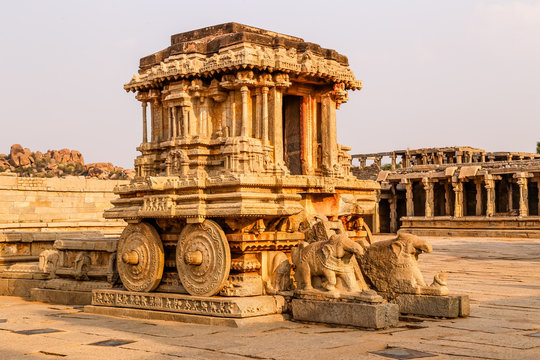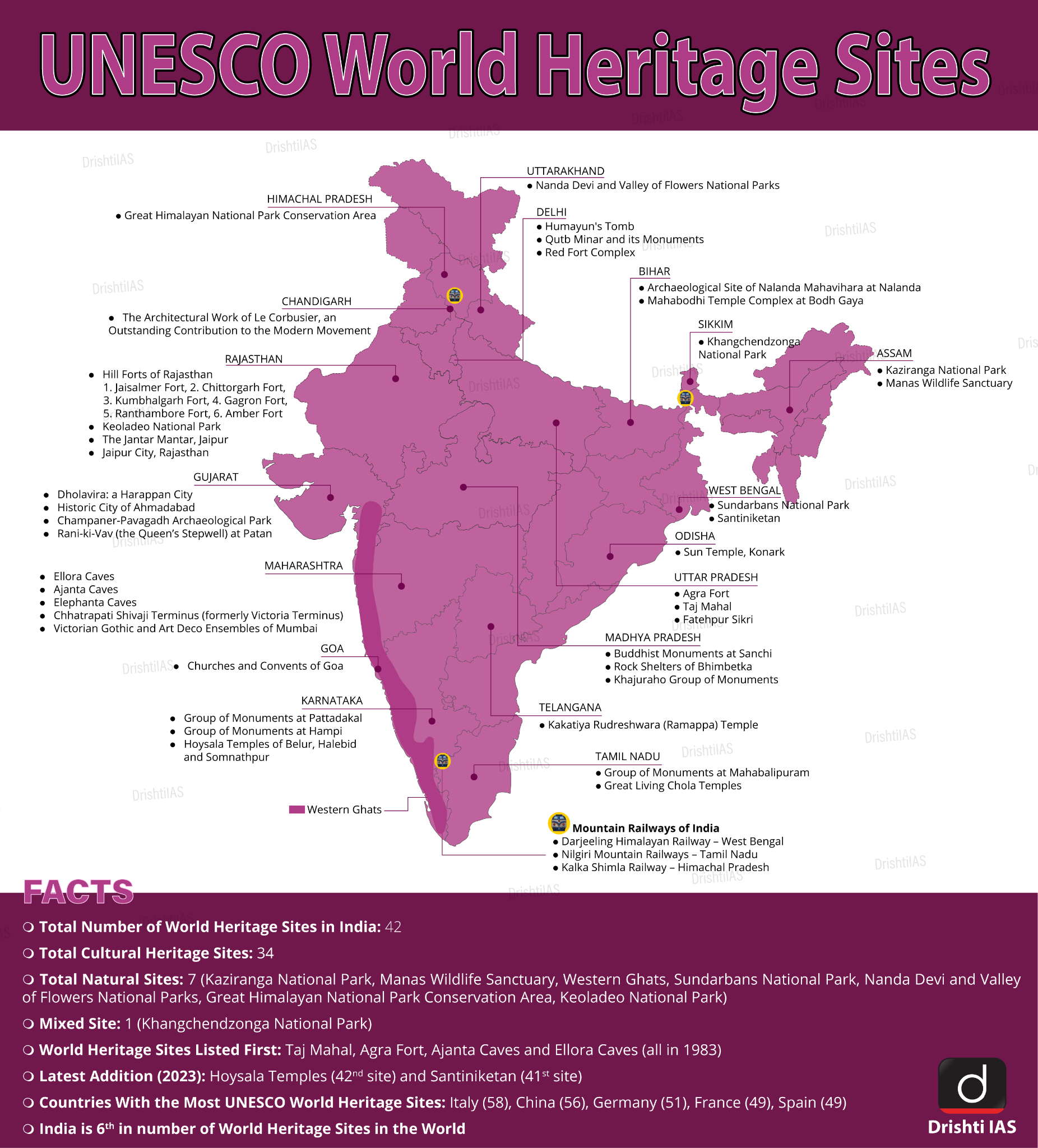Important Facts For Prelims
Restoration of Virupaksha Temple Pavilion
- 28 May 2024
- 3 min read
Why in News?
The Archaeological Survey of India (ASI) is set to begin restoration work on the collapsed saalu mantapa or pavilion (a type of Mandapa) at the iconic Virupaksha temple aPrauda Deva Raya part of the Group of Monuments at Hampi, designated as a UNESCO World Heritage Site.
What are the Key Facts About Virupaksha Temple Hampi?
- Virupaksha Temple is the 7th-century Shiva temple in Hampi, Central Karnataka.
- Lord Virupaksha, also referred to as Pampapathi is the main deity in Virupaksha Temple.
- The Virupaksha Temple was built in the Vijayanagara style of architecture and was built by Lakkan Dandesha, a nayaka under the ruler Deva Raya II, also known as of the Vijayanagara Empire.
Group of Monuments at Hampi
- Hampi, located in central Karnataka on the banks of the Tungabhadra River, is a UNESCO World Heritage Site. Spread over an area of nearly 4,200 hectares, the site contains over 1,600 surviving monuments, including forts, temples, palaces, and other structures.
- It was once the capital of the Vijayanagara Empire, known for its historical and archaeological significance.
- The location of Hampi, amid craggy hills and the Tungabhadra River, provided a natural defensive setting for the capital city.
- Hampi's monuments showcase the pinnacle of Vijayanagara architecture, a synthesis of the Dravidian style with Indo-Islamic influences.
- Architectural Marvels: The Vitthala Temple complex, features exquisitely carved pillars and the iconic Stone Chariot.
- The Royal Enclosure with its majestic structures like the Lotus Mahal and Elephant Stables.
- The Hazara Rama Temple, is known for its intricate stone carvings and sculpted panels.
- The massive Virupaksha Temple, one of the oldest and most sacred sites in Hampi.
- Notable Structures: Krishna temple complex, Narasimha, Ganesa, Hemakuta group of temples, Achyutaraya temple complex, Vitthala temple complex, Pattabhirama temple complex, and Lotus Mahal complex.
- The ruins at Hampi were brought to light in 1800 by an engineer and antiquarian named Colonel Colin Mackenzie.
- In recognition of its outstanding universal value, the United Nations Educational, Scientific and Cultural Organization (UNESCO) inscribed Hampi as a World Heritage Site in 1986.






